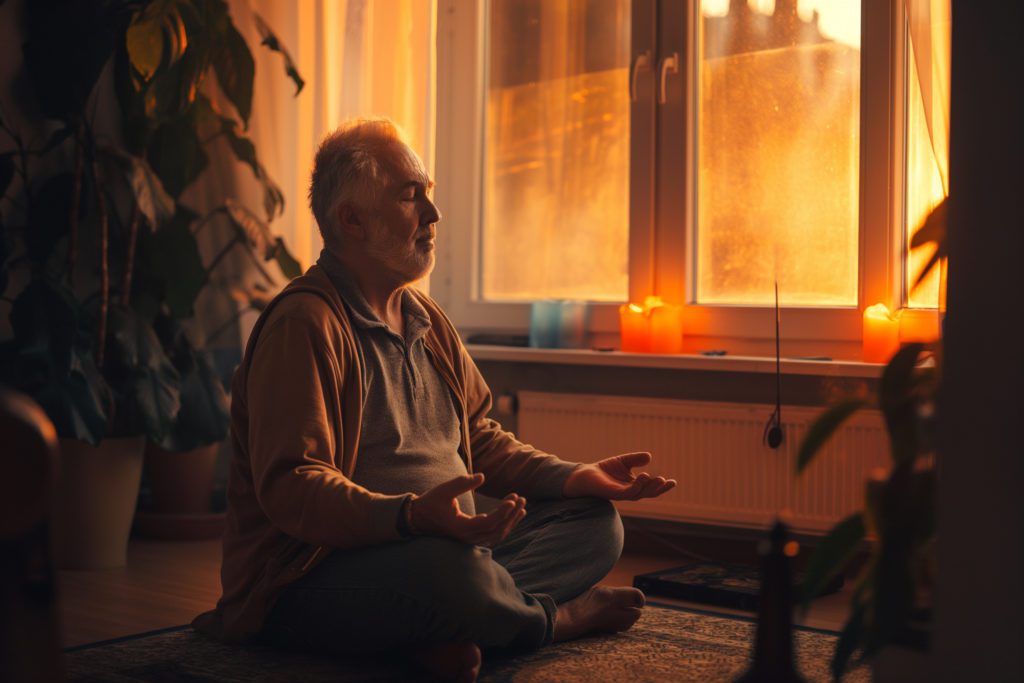
Cultural and Historical Contexts of Mindfulness Practices
Eager to learn more about mindfulness? Explore the historical and cultural evolution of mindfulness practices from ancient origins to modern applications.

Today, mindfulness has become a buzzword worldwide, yet few people actually know the roots behind this impressive practice for stress relief and relaxation. The mindfulness movement first originated from Buddhist and Western texts, but it has transformed into a vast collection of different activities, therapies, and more that people use to benefit their overall wellness. If you are curious about the historical and cultural contexts of mindfulness practices, read on!
In this article, we’ll learn more about the origins of mindfulness, how it spread to other cultures, what mindfulness has become in Western cultures, and some of the most common mindfulness practices you might see today. Let’s start with the most essential part of this discussion: finding out where mindfulness came from.
The Origins of Mindfulness: An Ancient Indian Belief
Mindfulness has become a buzzword during the 21st century, but it has been around for quite some time. In fact, the concept of mindfulness has been mainly associated with Buddhism for over 2,500 years, mainly present in early textual records from ancient Indian Buddhism (Source: Religious and Spiritual Practices in Asia: Continuity and Change). As you might know, Buddhism dates back to the 5th century BCE, and the concept of mindfulness, also known as sati, is still part of this religion today. Yet, it was first inspired by Hinduism.
Hinduism is one of the oldest Indian faiths, and as part of their belief system, meditation was an integral part of how people achieved liberation from their suffering. While meditation is a specific practice of mindfulness, it does show just how much Buddhism was inspired by Hinduism and the depth of mindfulness’s origins! Because of Buddhism’s roots, Buddhists believe that the right mindfulness or samma sati can lead to people cultivating the right mental states so that they can gain wisdom, understand their world, and then seek liberation from their attachments in their lives.
In other words, if you are able to remain mindful, you’ll be able to achieve the ultimate goal, which is to proceed to the afterlife to be free from suffering. Buddhist traditions have long held mindfulness to be an integral part of their faith, but there are also other cultures and religions that have adopted similar principles.
The Spread of Mindfulness Outside of India
Buddhism was one of the most prominent faiths to incorporate mindfulness, but other cultural contexts also adapted this practice or principle as part of their beliefs. As soon as Buddhism traveled outside of India, the religion spread many of its tenets, including mindfulness. Once the religion made its way to China and Japan, concepts like dhyana, which refers to meditation or awareness—related to mindfulness—were then adapted to other cultures.
In China, the concept of meditation became Chan, but in Japan, they adopted the practice of mindfulness as Zen (Source: PubMed). For both China and Japan, meditation and mindfulness are about awareness, about truly recognizing one’s place in the world and appreciating one’s surroundings, much like Buddhists still practice today. Another faith that adopted a similar but unique understanding of mindfulness in Asia was Taoism.
According to Taoists, the individual should be open to one’s experiences and avoid forcing anything to happen, as seen with the concept of wu wei. While this might be a less active approach to mindfulness, it still shows how other countries and cultures adopted mindfulness in their own way, providing benefits to those who practiced these faiths. Some of these benefits are still felt today as a result of how these practices have become integrated into people’s lives.
A Look at Modern Mindfulness: Yoga, Tai Chi, and More
Whether you choose to do mindfulness meditation, yoga, or even engage in some Tai Chi, all of this relates back to the ancient Buddhist understanding of mindfulness. Yoga is a physical, mental, and spiritual discipline that focuses on non-attachment, awareness, and the ability to control the senses (Source: PubMed). If you practice yoga regularly, you might notice the benefits of this practice in your own life and just how relaxed you become over time!
Tai Chi is another related but distinctly different exercise that incorporates mindfulness. Originating in Chinese culture, this martial art is about slow, controlled movements that allow the individual to become aware of their energy while also encouraging more strength, flexibility, and mindfulness (Source: BMC Neurology). You might see people doing this in the park in groups, or you might even complete some Tai Chi at home on your own, using it as your own meditative practice.
Western Mindfulness Techniques and Practices
As you can see, mindfulness is definitely a tradition with strong roots in Asian history, but the Western world has also created and included many of its own modern techniques. Over the last fifty years, mindfulness has become more popularized in the West after its initial introduction, even having been integrated into psychological practices. Meditation is one practice that has been combined with existential psychotherapy for added benefit and one you might have encountered in your life.
Other scholars and professionals in psychology have used mindfulness as the basis for creating programs like Mindfulness-Based Stress Reduction (MBSR), which was created by Jon Kabat-Zinn in 1979 to help relieve the suffering of patients who struggled with chronic pain so that they can self-regulate their stress and emotions (Source: PubMed). Chances are, you may have interacted with this therapy modality if you have been to a psychologist!
Today, whether you do yoga regularly, meditate every day, or choose to pursue MBSR treatment, mindfulness has become a part of our world in so many ways, continuing to influence us even after many thousands of years.
Practice Mindfulness Exercises to Improve Your Sleep
Now that you know a little bit more about how mindfulness exercises originated and what they are now, you can take steps to encourage more restful sleep. Whether you choose to meditate, do some pre-bedtime yoga, or even consider therapy, it can provide you with plenty of benefits. We hope that this article helped you learn something new!

Written by
Marie Soukup
Marie Soukup is a seasoned copywriter, editor, and Integrative Nutrition Health Coach with a certificate from the Institute of Integrative Nutrition (IIN). With years of experience working with brands across diverse industries, Marie is passionate about holistic health and crafting compelling content.
Download Pillow
Get help
Press & News
Legal
Connect
X (Twitter)
Company
Copyright © Neybox Digital Ltd.


